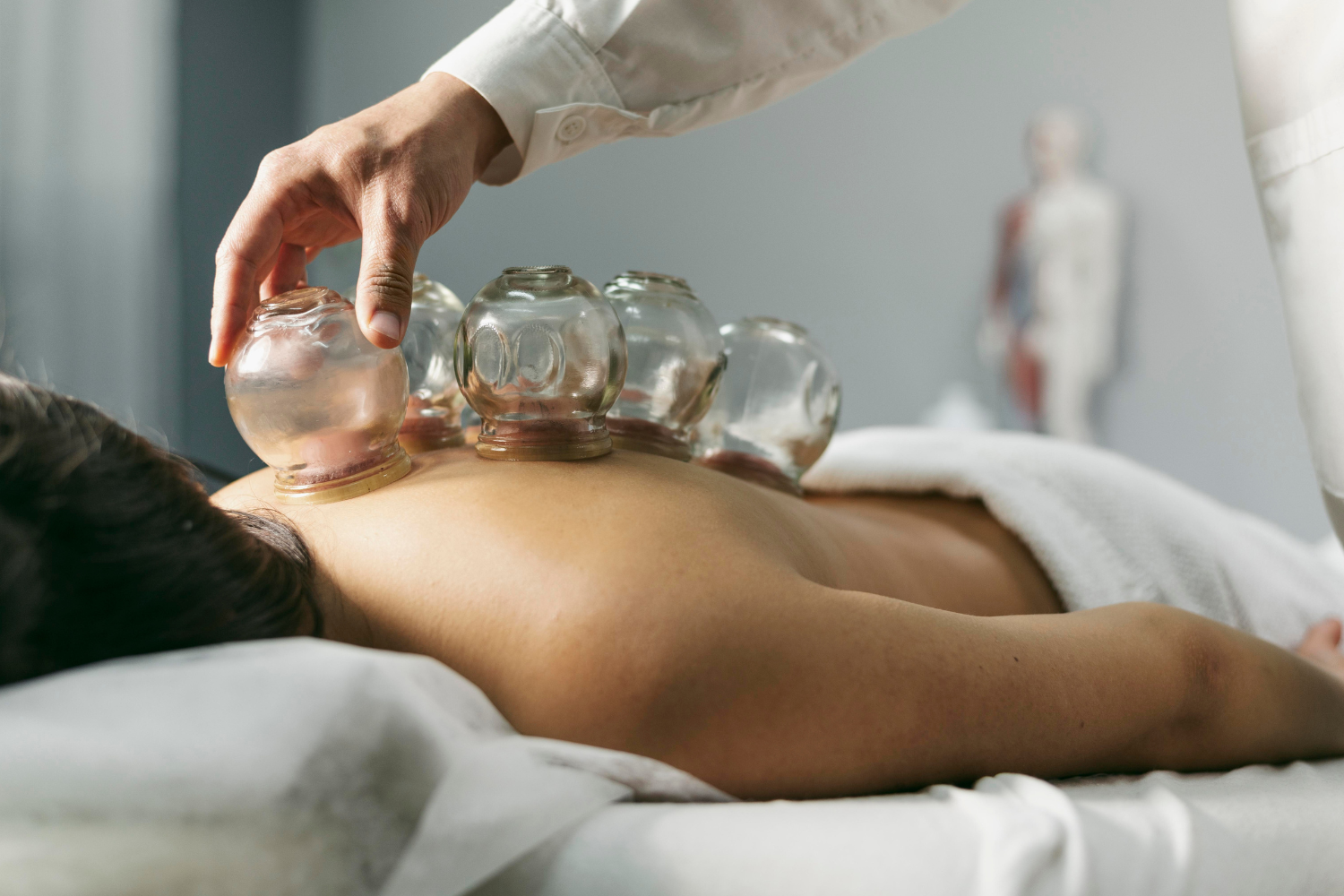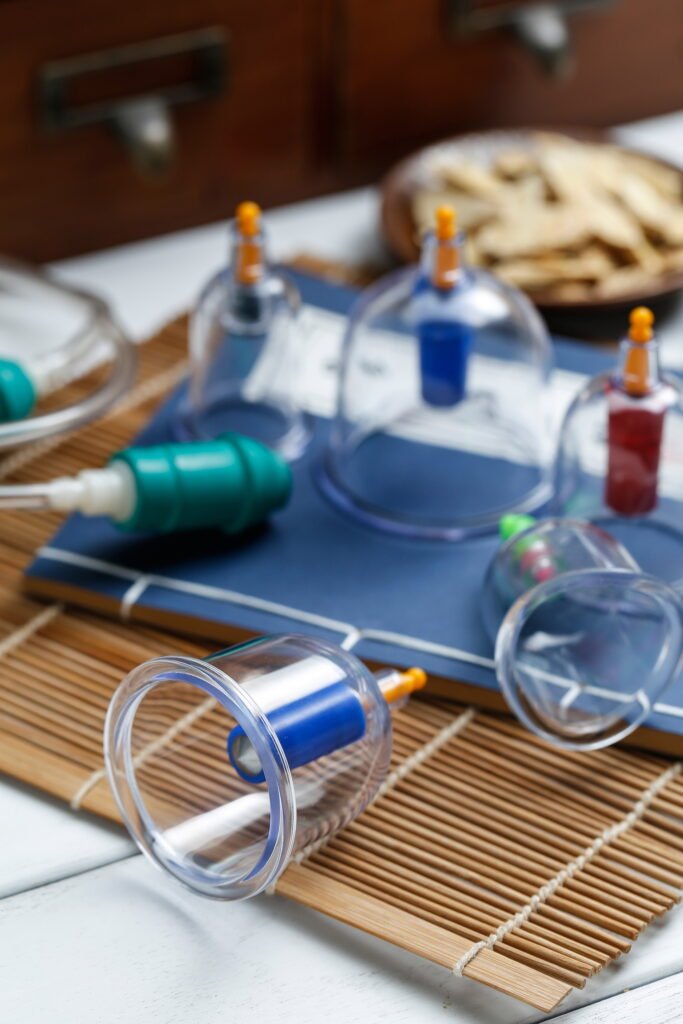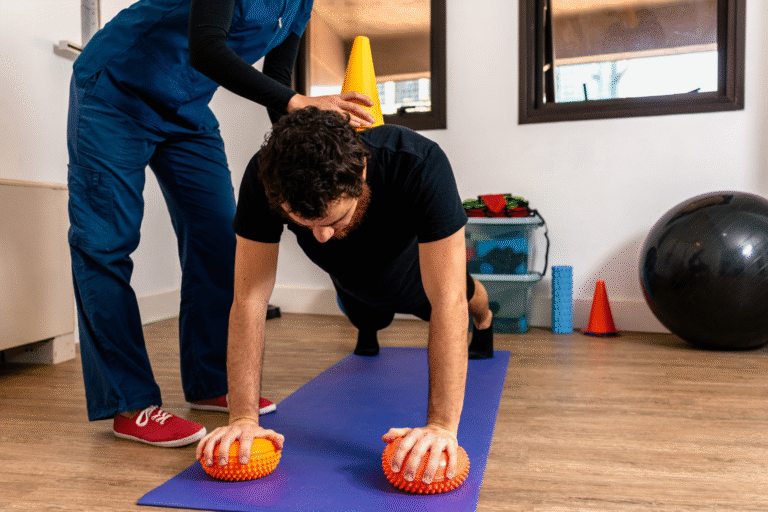
5 Proven Benefits of Dry Cupping: How Manchester Athletes Unlock Faster Recovery With This Ancient Recovery Method
“When did dry cupping really become popular?”
Those circular purple marks on Michael Phelps’s shoulders during the 2016 Rio Olympics sparked a global conversation. Suddenly, everyone wanted to know about the mysterious treatment that left Olympic athletes looking like they’d been attacked by a giant octopus.
Turned out it was Dry cupping, an ancient therapy that’s become a modern recovery tool for professional athletes, weekend warriors, and people dealing with chronic pain. The same principles that help elite athletes recover between competitions can benefit Manchester footballers dealing with muscle tightness, office workers managing chronic back pain, and runners trying to stay injury-free through training.
The questions most people ask are straightforward. Does it work? Will it hurt? Why would anyone voluntarily create bruises on their body? And most importantly, could dry cupping in Manchester help with the specific issues you’re dealing with?

What is Dry Cupping?
Dry cupping is a treatment where small cups made of glass, plastic, or silicone are placed on the skin, creating suction. This suction lifts the skin, muscle, and fascia, which improves blood flow and stimulates healing. The cups can be left on the skin anywhere from a couple of minutes to half an hour, depending on the individual and the treatment being performed.
The process creates negative pressure that pulls the skin and blood vessels toward the cup. It’s like the opposite of a massage. Instead of applying pressure down into tissues, dry cupping pulls tissues up and away from underlying structures.
Those signature marks everyone notices are caused by the vacuum effect bringing blood to the surface. The visibility of the bruising or lack thereof has no impact on whether or not the therapy has been effective. Some people mark heavily, while others barely show any discoloration.
Dry cupping differs from wet cupping, which involves small incisions in the skin to draw out blood. In Manchester sports therapy clinics, dry cupping is the standard approach because it’s less invasive and carries minimal risk while still providing therapeutic benefits.

What Happened to Michael Phelps in 2016?
When Michael Phelps showed up to the 2016 Rio Olympics with distinctive purple circles dotting his shoulders, the mysterious marks sparked a conversation globally. “Why did the most decorated Olympian of all time endorse an ancient therapy that most Western audiences had never heard of?”
Phelps’s longtime trainer said he had been using the therapy on Phelps since fall 2014, applying it about twice a week. The treatment helped address shoulder discomfort and maintain the tissue quality needed for swimming at elite levels well into his thirties.
Since Phelps began using the treatment, several other athletes followed suit, including Dana Vollmer, who won two medals in Rio 17 months after giving birth. She explained that it “helps with blood flow, helps pull swelling out of different areas.”
The cupping trend started in Hollywood with Gwyneth Paltrow, who sported a backless dress at a red carpet event in 2004 that revealed cup marks down her back. Since then, celebrities from Jennifer Aniston to tennis star Andy Murray have embraced the practice.
Everyone decided that if it was good enough for Olympic gold medalists, it would do a lot of good for regular people dealing with everyday training stress.
What are the Benefits of Dry Cupping?
Dry cupping as a therapy addresses both immediate symptoms and underlying tissue problems. Here are some of the important ways it benefits the body:
- Improved Blood Flow and Circulation
The suction causes tiny blood vessels in the skin to widen, pulling more blood into the treated area. This increased blood flow brings oxygen and nutrients and helps remove waste. For Manchester athletes recovering between training sessions, better circulation means faster tissue repair.
- Myofascial Release and Tissue Mobility
Fascia, the connective tissue around muscles, can become tight from overuse, injury, or poor movement habits. Cupping gently lifts and separates these layers, improving mobility and reducing the restrictions that limit smooth, efficient movement.
- Pain Reduction and Muscle Relaxation
Cupping therapy has low to moderate evidence supporting its use in musculoskeletal and sports rehabilitation. It may be a helpful intervention because it can reduce pain and improve blood flow to the affected area, with minimal risk of adverse effects.
- Recovery Enhancement
For athletes training consistently, cupping can support active recovery by improving circulation and helping the body clear metabolic by-products that contribute to soreness. This can reduce muscle discomfort and shorten recovery time between competitions or training sessions.
- Sleep Quality Improvement
Research has shown that cupping can improve sleep quality during preseason conditioning, a time when athletes often sleep poorly due to increased training stress. Better sleep leads to better recovery and stronger adaptation to training.
Who Can Benefit from Dry Cupping in Manchester?
Dry cupping is useful for both elite athletes and individuals dealing with everyday pain, making it a valuable treatment option for a wide range of people across Manchester. Here’s a breakdown of the various groups of people who may benefit from the procedure:
Competitive Athletes
Runners, footballers, cyclists, and gym enthusiasts all place similar stress on their tissues during heavy training. Dry cupping helps manage the buildup of this stress and keeps the muscles in good condition.
Since Manchester athletes are always looking for recovery advantages, cupping is a professional recovery method that can be adapted for anyone who trains seriously, at any level.
Weekend Warriors
You don’t need to be chasing Olympic medals to benefit from cupping. People who train a few times a week, play recreational sports, or stay generally active can still develop muscle tightness and tissue restrictions similar to elite athletes, just on a smaller scale.
Office Workers with Chronic Pain
Sitting at a desk for eight hours can cause postural stress, leading to chronic neck, shoulder, and upper-back pain. Cupping helps release muscle tension and improve tissue mobility caused by long periods of sitting, and works well alongside other treatments for desk-related issues.
People with Specific Conditions
Research and clinical experience show that cupping can help with nonspecific chronic low back pain, neck and shoulder pain, fibromyalgia, muscle stiffness and sports-related soft-tissue injuries.
Dry Cupping vs Other Recovery Methods: Which is Best for You?
Knowing how cupping works with other recovery methods makes it easier to decide when it’s the right option. We compare dry cupping with popular recovery methods so you are well informed on what to choose and when:
Cupping vs Sports Massage
Massage works by pressing into the tissues, while cupping uses suction to lift them away from the underlying structures. Both improve circulation and tissue quality, but in opposite ways. Many Manchester athletes find that using both together gives better results than either one alone.
Sports massage is great for releasing deep trigger points and targeting specific muscle tightness. Cupping is better for broad fascial restrictions and for areas that are too sensitive for direct pressure. Together, they treat different layers of tissue problems.
Cupping vs Foam Rolling
Foam rolling applies your own body weight to release tight muscles. It’s convenient and affordable, but it can only reach so deep. Cupping affects deeper tissue layers and creates results that foam rolling can’t match.
For Manchester athletes on a budget, foam rolling is great for daily maintenance, while occasional cupping sessions can target deeper issues that self-treatment can’t reach.
Cupping as Part of Complete Recovery
The English Institute of Sport said some physiotherapists may use cupping as an add-on treatment, but it should only be a small part of a full, evidence-based rehab and recovery plan.
This is the smart way to use cupping. It’s a helpful tool, not a standalone solution. Manchester athletes get the best results when they pair cupping with good training load management, proper sleep and nutrition, strength and mobility work, and other recovery methods when needed.
What to Expect From Dry Cupping Treatment?
If you’re considering dry cupping in Manchester, knowing what the process involves helps set appropriate expectations. Here’s a step-by-step guide on what to expect:
Initial Consultation
The right provider will assess your specific situation before applying cups. They’ll ask about your activities, pain patterns, previous injuries, and what you’re hoping to achieve. This determines cup placement, suction pressure, and treatment duration.
The Treatment Process
Cups are placed in specific areas based on your needs. For athletes, this often means the upper back, shoulders, and areas of high training stress. The suction might feel tight and uncomfortable initially, but it shouldn’t be painful. Most people describe it as an intense pulling sensation that becomes tolerable after the first minute.
Treatment typically lasts 10-15 minutes per area. Some practitioners use stationary cups left in place. Others use moving cupping techniques where cups glide across lubricated skin, combining cupping with massage-like effects.
Immediate After-Effects
Your skin will show circular marks ranging from light pink to deep purple. These aren’t bruises in the traditional sense. They’re caused by bringing blood to the surface and typically fade within 3-7 days. The marks don’t hurt and don’t indicate tissue damage.
Some people feel immediate relief and improved movement. Others notice changes within 24-48 hours as inflammation reduces and tissue quality improves. It is normal to feel soreness in treated areas, but that’s only temporary for a few hours.
Treatment Frequency
Athletes during heavy training might benefit from weekly sessions. People with chronic pain might start with twice-weekly treatment for 2-3 weeks, then transition to maintenance sessions every 2-4 weeks.
The frequency depends on your condition, training demands, and how your body responds.
Commonly Asked Questions About Dry Cupping?
Most people’s hesitation about cupping comes from misconceptions or incomplete information. Here are some common questions about the treatment, and the real answers.
- “Are Those Marks Painful?”
The circular marks may indeed look like bruises but they don’t hurt in reality. The treatment creates visible evidence of increased blood flow to treated areas. American swimmer Cody Miller explained it as “superficial bruising, not real bruising. Your muscle tissue isn’t torn up in there.”
- “Does It Really Work or Is It a Placebo?”
Research shows measurable physiological effects including increased blood flow, reduced pain perception, and improved tissue compliance. The placebo effect is powerful and shouldn’t be dismissed. If cupping helps you feel better and perform better, whether through physiological mechanisms or psychological confidence, the end result is what matters.
- “Is It Safe?”
Cupping is a non-surgical and low-cost treatment with rates of adverse outcomes as low as 0.008%. When performed by trained practitioners, dry cupping is extremely safe. Minor side effects include temporary marks on skin, mild discomfort during treatment, and occasional lightheadedness. Serious complications are rare and typically only occur with improper technique or ignoring contraindications.
- “Who Shouldn’t Get Cupping?”
Pregnant women should avoid cupping on the abdomen and lower back. People with bleeding disorders or taking blood thinners should consult their physicians first, too. Active skin infections, severe sunburn, or open wounds on treatment areas are contraindications. People with deep vein thrombosis, significant varicose veins, or bone fractures in treatment areas must also avoid cupping.
How to Get Quality Dry Cupping in Manchester?
Manchester has many cupping providers, but quality can vary. Choosing an experienced practitioner is important for both safety and effective results. Below is a list of things to look out for.
- Professional Qualifications
Look for practitioners with formal training in cupping therapy, preferably integrated with broader credentials in sports therapy, physiotherapy, or traditional Chinese medicine. A certification from recognized bodies indicates proper training in technique and safety protocols.
- Sports-Specific Experience
If you’re an athlete, find providers who regularly work with athletes in your field. They often understand training demands, competition schedules, and how to integrate cupping into your full recovery strategy.
- Comprehensive Approach
The best Manchester providers don’t just apply cups and send you away. They assess movement patterns, discuss training or activity factors contributing to your issues, and only use cupping as part of a broader treatment strategy.
- Facility Standards
Professional facilities maintain proper hygiene, use quality equipment, and follow safety protocols. Single-use cups or proper sterilization between patients prevents cross-contamination. The right facility must be clean and organized at all times.
Why Choose Hekas for Dry Cupping in Manchester?
Manchester has various options for accessing cupping therapy, from sports therapy clinics to traditional Chinese medicine practitioners, and DIY kits. However, professional treatment provides benefits that make it worth the investment.
Trained practitioners understand proper cup placement, appropriate suction pressure, and treatment duration for different conditions. They recognize contraindications and adjust approaches based on individual response. Professional assessment determines whether cupping is appropriate for your specific situation or if other interventions would be more beneficial.
Our Manchester clinic offers dry cupping as part of comprehensive sports therapy and recovery services. We work with athletes at every level who understand that modern recovery combines ancient techniques with current sports science. Whether you’re a competitive athlete managing training stress, a weekend warrior maintaining an active lifestyle, or someone dealing with chronic pain that hasn’t responded to other treatments, we will help determine if cupping fits your needs.
We combine dry cupping with sports massage, movement assessment, and other evidence-based treatment approaches to address your specific situation. The distinctive circular marks might get attention, but the improved tissue quality, reduced pain, and enhanced performance are what matter.
Book your consultation today and discover why Manchester athletes and active people choose us for their dry cupping sessions. Your training and recovery deserve the same attention to detail that Olympic athletes bring to their preparation.



